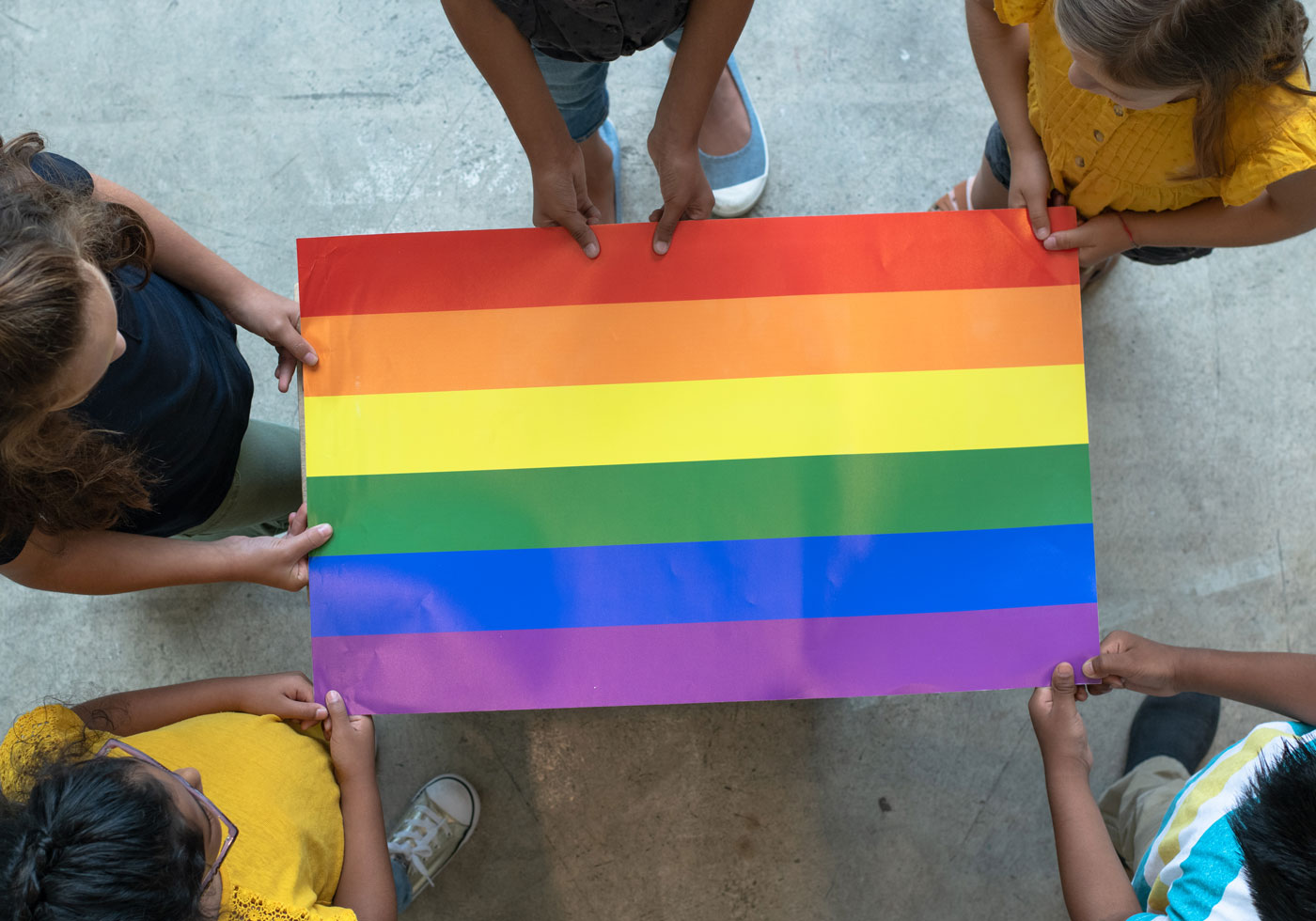
Valencia began to check in with this student on a regular basis to get a better understanding of how they were feeling and how he could offer support. When delivering the social-emotional curriculum to this student’s particular class, for instance, Valencia said he would tailor lessons to also include acceptance, defining what love is and acknowledging that “who we choose to love is not directly associated with our gender at birth.”
Small but symbolic gestures can help wear down falsehoods surrounding gender norms — the things considered to be normal or acceptable for boys, or normal and acceptable for girls. This same student, as an example, loved scrunchies, and when it came to Valencia’s attention that students were teasing the student about it, the school counselor took one of his partner’s scrunchies and wore it around his wrist at school to normalize the idea that boys having long hair or wearing scrunchies wasn’t all that weird. Being able to show a picture of Jason Momoa — known for his roles in Aquaman and Justice League — wearing a pink scrunchie helped drive the point home.
In June, the celebration of Pride Month provided local educational agencies an opportunity to put extra focus on the needs of their LGBTQ students. “These students are here and they are operating amongst some of our most vulnerable populations on school campuses — they’re some of our most bullied and harassed,” said Valencia.
It’s important to talk about suicide rates, but it’s more important that schools actually address issues that are happening on campuses that make suicidality a reality, Valencia said.
School counselors and teachers are well-positioned to be that positive, influential model in a kid’s life, but time needs to be carved out during the school day when children are on campus to build these relationships, Valencia said. Without enough face-to-face time with children in the hours they’re on campus, educators feel like they’re playing catchup in working to understand their students, he said.
Providing name tags with a section for students to include their preferred pronouns, or simply moving away from gendered language — like addressing groups of students as “y’all” and “everyone” instead of “guys” — can prove to be small but meaningful steps, he explained.
“It’s important to take some time to self-reflect on the language that we use and provide some accountability on how we use language, how we talk to students and whether or not we understand if that’s inclusive,” said Valencia.
As more LGBTQ students return to in-person instruction this fall, it is likely they will be coming back with challenges similar to other student groups, but for different reasons. Research shows that the majority of LGBTQ students depend on key support at school, even — and especially — if they’re not publicly out or out at home. This support may come from friends, school staff or clubs such as the gay–straight alliance. It is likely that during the extended closures that many LGBTQ youth were unable to safely live as their full, authentic selves, which can be mentally exhausting.
Going into the next school year will require counselors and educators to take a trauma-informed approach with students, Valencia said. “It’s important to acknowledge [LGBTQ students’] humanity, it’s important to acknowledge who they are — and who we would like to be as a community that respects all our wonderful differences and can co-exist with one another with empathy.”